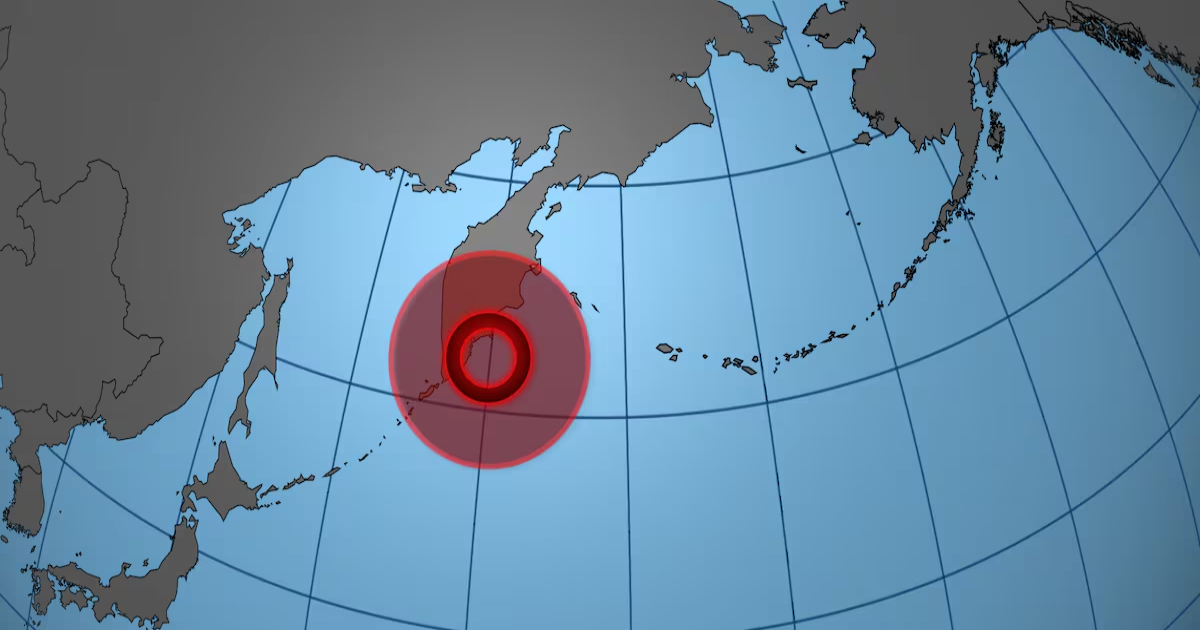HONOLULU (HawaiiNewsNow) – A tsunami advisory that was in effect for Hawaii has been canceled.
The all-clear came in just before 9 a.m. Wednesday.
The Pacific Tsunami Warning Center said tsunami wave heights had dropped below advisory levels and continued to diminish.
Small sea-level changes and strong or unusual currents may persist for several more hours in some coastal areas and appropriate caution should be taken by boaters and swimmers.
Hawaii was under a tsunami warning for eight hours, from 2:43 p.m. to 10:40 p.m., following a magnitude-8.8 earthquake off Russia.
The first tsunami wave arrived at around 7:17 p.m. Water could be seen gradually receding in Hanalei Bay and at Haleiwa on Oahu’s North Shore.
Warning sirens first sounded at 3:23 p.m. and went off at regular intervals throughout the afternoon and evening to alert the public to the danger.
Officials said urgent action should be taken to protect lives and property, including evacuations to higher ground.
At 7:30 p.m., Chip McCreery, Pacific Tsunami Warning Center director, said water levels were dropping to a below-normal sea level, and it could be awhile before an all-clear is given.
At around 10:40 p.m., the Pacific Tsunami Warning Center said tsunami wave heights had dropped below the three-foot threshold and had begun to stabilize, leading the center to downgrade the warning to an advisory.
State and county officials lifted evacuation orders shortly after.
Still, officials warned, sea-level changes and strong currents may occur along all coasts that could be a hazard to swimmers and boaters, as well as people near the shore at beaches and in harbors and marinas.
The Pacific Tsunami Warning Center issued its final message on the event at 8:58 a.m. announcing the advisory cancellation.
Be aware of whether you are in a tsunami evacuation zone. If you are not sure, an interactive map is available here.
Evacuation maps are also available here and here.
ADDITIONAL UPDATES
The Pacific Tsunami Warning Center said the earthquake struck at 1:25 p.m. HST off the east coast of Kamchatka.
A tsunami watch was issued at 1:33 p.m. HST, and a warning was issued at 2:43 p.m. HST.
The earthquake was initially reported at magnitude 8.0, upgraded to magnitude 8.7, then later to 8.8, as listed by the U.S. Geological Survey.
The earthquake generated a tsunami that had the potential to cause damage along coastlines of all islands in the state of Hawaii.
A tsunami is a series of long ocean waves. Each individual wave crest can last 5 to 15 minutes or more and extensively flood coastal areas. The danger can continue for many hours after the initial wave as subsequent waves arrive.
Tsunami wave heights cannot be predicted and the first wave may not be the largest. Tsunami waves efficiently wrap around islands. All shores are at risk no matter which direction they face.
The trough of a tsunami wave may temporarily expose the seafloor but the area will quickly flood again. Extremely strong and unusual nearshore currents can accompany a tsunami.
Debris picked up and carried by a tsunami amplifies its destructive power. Simultaneous high tides or high surf can significantly increase the tsunami hazard.
Click here for information on other impacted areas.
RELATED POST: How to prepare for a tsunami in Hawaii
Warning center scientists use an earthquake’s preliminary seismic information to decide if an earthquake could have generated a tsunami.
Within minutes of an earthquake, they can issue messages that provide alert levels (warning, advisory, watch, information statement), preliminary information about the earthquake, and an evaluation of the threat.
Messages are updated regularly throughout an event as information becomes available.
Here are the different levels of tsunami alerts that you should know:
A tsunami watch is issued when an earthquake occurs that could generate a tsunami. Prepare to take action if the watch is upgraded to a advisory or warning.
A tsunami advisory is upgraded from a watch if a potential tsunami could cause strong currents or dangerous waves. Widespread inundation is not expected. Stay away from beaches and waterways.
A tsunami warning is issued if significant, widespread inundation is imminent or expected with dangerous coastal flooding and currents. Take urgent action to protect life and property, including evacuations.
Copyright 2025 Hawaii News Now. All rights reserved.
